A Japanese capsule carrying asteroid samples was safely recovered Sunday.
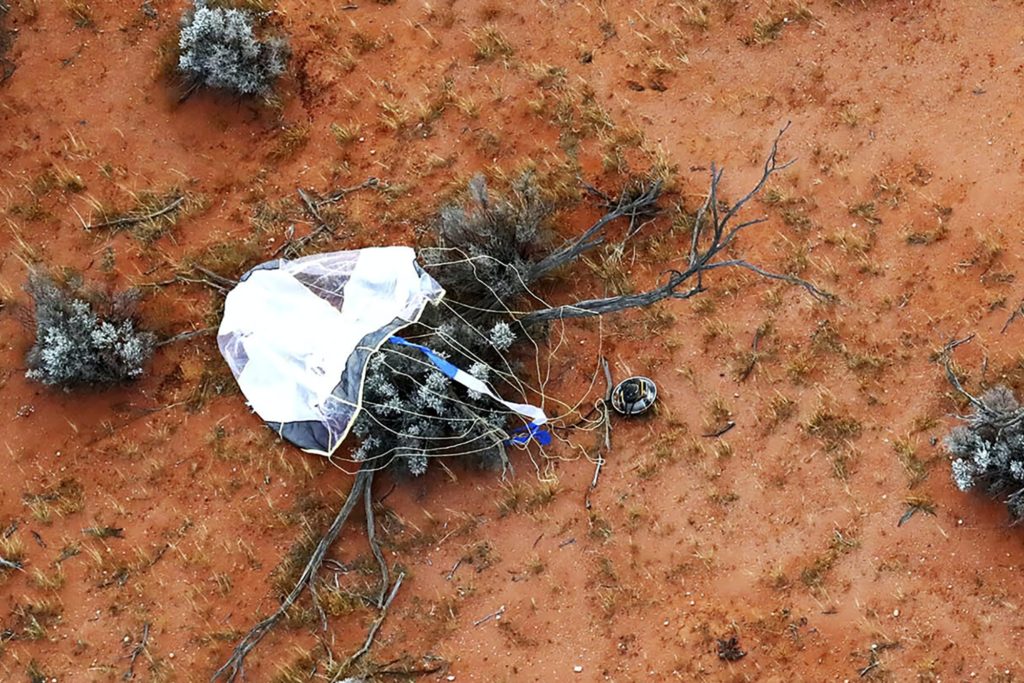
The first mission of its kind has recovered pristine asteroid fragments in the Australian Outback. This finding may help unlock secrets about the formation of the universe.
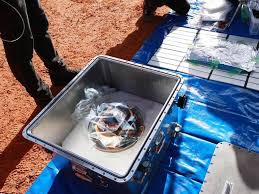
Updated
The following written content from Guardian
For the past six years, Japan’s Hayabusa2 spacecraft has conducted a remarkable 5.2bn km mission to extract the first-ever sub-surface samples from the asteroid Ryugu, which scientists hope will shed light on the origins of life.
In the early hours of Sunday, Hayabusa2 returned past Earth and dropped a capsule containing the precious sample, weighing less than 0.1 grams, down into the South Australian outback.
The capsule briefly turned into a fireball and streaked across the sky as it returned to the Earth’s atmosphere, before landing in the Woomera prohibited area.
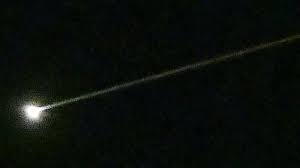
Search teams have found the capsule, about 40cm in diameter, and collection work had begun on Sunday morning.
As the capsule returned safely to Earth, staff with the Japan Aerospace Exploration Agency beamed and exchanged fist and elbow touches at the agency’s command centere in Sagamihara, near Tokyo.
“It was great … It was a beautiful fireball, and I was so impressed,” said Hayabusa2 project manager Yuichi Tsuda from a command centre in Sagamihara, near Tokyo.
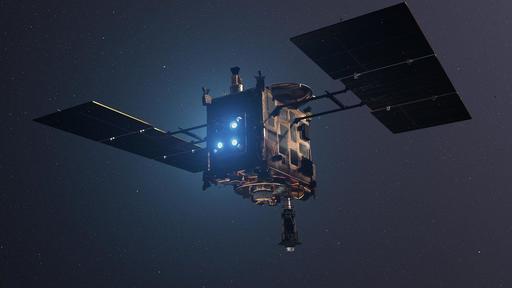
“I’ve waited for this day for six years.”
After it released the capsule, Hayabusa2 moved away from Earth to capture images of the capsule descending toward the planet as it set off on a new expedition to another distant asteroid. Its next mission will take a decade.
It is the second time a pristine, untouched asteroid sample has been brought back to Earth, but the first time an underground sample has been retrieved.
“Ryugu is extra special as it is thought to be the type of asteroid that carbonaceous meteorites come from,” Dr Eleanor Sansom, a planetary scientist and project manager of the Desert Fireball Network at Curtin University, said earlier this week. “If Hayabusa-2 samples match these carbonaceous meteorites, they could contain amino acids – the building blocks of life.”
In Canberra, Deep Space Communication Network director Ed Kruzins has been helping track Hayabusa2 since its launch in 2014. He said the mission was now in its most exciting phase.
“What’s particularly interesting about this vehicle is it runs solar-electric ion thrusters,” he said.
“So 66 kilograms of fuel can take you billions of kilometres. An extremely efficient way of manoeuvring.”
Professor Masaki Fujimoto, from Jaxa, said the asteroid samples may help answer a fundamental question: how did water and subsequently life, begin on Earth?
“Earth was formed close to the sun, so it was formed dry,” he said.
“Original Earth didn’t have water at all. So something had to bring water to our planet to make it habitable. Something like Ryugu brought water to earth and that’s why we are here.”
People who gathered to watch the capsule’s separation at public viewing events across Japan cheered the success. “I’m really glad that the capsule has been successfully released. My heart was beating fast when I was watching,” said Ichiro Ryoko, a 60-year-old computer engineer who watched at Tokyo Dome.
Australia’s science and technology minister Karen Andrews said the successful landing was an “incredible accomplishment” for Australia, which played a supporting role to Jaxa.Australia’s science and technology minister Karen Andrews said the successful landing was an “incredible accomplishment” for Australia, which played a supporting role to Jaxa.
The agriculture minister, David Littleproud, said the sample would provide scientific evidence of any biosecurity risks from asteroids. Read more from Guardian
Read similar news stories from News Without Politics
Subscribe to News Without Politics
Capsule approaches to drop asteroid samples
From December 4th 2020
The Japanese space probe Hayabusa2. The capsule approaches to drop asteroid samples of asteroid Ryugu to Earth this Saturday night. A year and a half ago, it extracted dust and rocks in an elaborate maneuver.
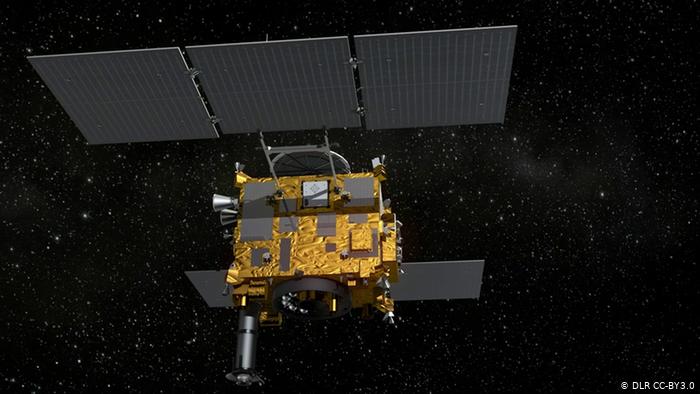
The following written content from Fabian Schmidt
In the desert of South Australia on Sunday, December 6 at around 4:30 a.m. local time, a container of dust and rock samples from asteroid 162173 Ryugu will touch down on the Woomera test site. In Central Europe it will still be around 7 p.m. Saturday. Hayabusa 2, the probe carrying the samples, has been on its way back to Earth for a little more than a year.
Just 13 hours before the landing of the valuable cargo, satellite experts from the Japan Aerospace Exploration Agency (JAXA) will enter the phase of the landing operation concerning the separation of the landing capsule from the space probe. At the point of ejection, the Hayabusa2 (the “Falcon 2”) will be about 220,000 kilometers from Earth — just over half as far away as the moon.
The detached, heat-protected landing capsule will reach the Earth via parachute, which is similar to the way manned space capsules return — only it is much smaller.
Hayabusa2 collected asteroid dust and rocks.
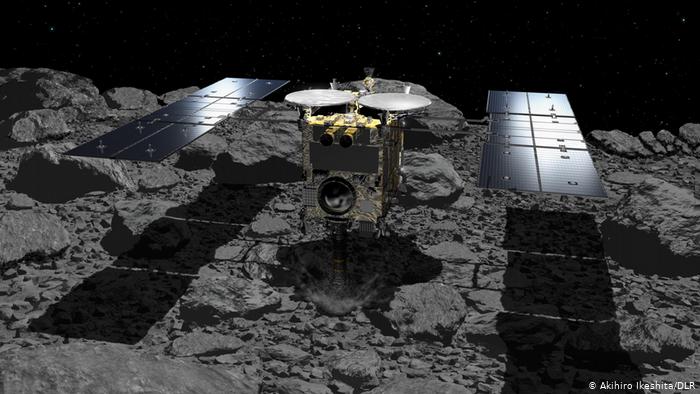
Two landings led to success
The collection of the asteroid rock samples was a difficult operation. On February 22, 2019, the probe landed on Ryugu for the first time and loosened dust and rocks. In April 2019, the probe fired a copper projectile at Ryugu’s surface to create a crater in order to expose even more dust. Thereafter, on July 11, 2019 Hayabusa2 landed on the asteroid a second time to collect the debris samples. In that moment, the probe was about 300 million kilometers away from Earth.
After the probe successfully collected its samples, it circled and measured the asteroid and collected more data with its remote sensing instruments until November 13. At that point, Hayabusa2 finally began its return flight to Earth, because the constellation of orbits was favorable.
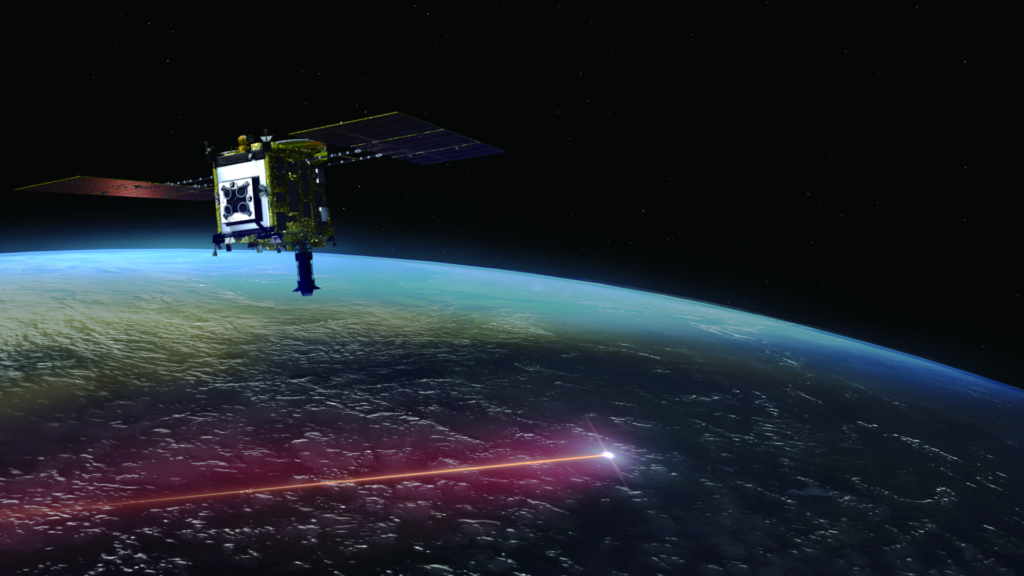
The components of Hayabusa2’s mission — an orbiter and a lander — may seem to resemble the journey of Rosetta and Philae to the comet Tschuri (2004-2016), but only at first glance. One marked difference between the missions is that the Rosetta spacecraft did not send a capsule with rock samples back to Earth.
Low gravity as a challenge
A major challenge for the mission was Ryugu’s low gravity. For this reason, the landing maneuvers had to be initiated carefully, as there was a danger that the probe would bounce off the asteroid’s surface and tumble uncontrollably.
However, this is not the first time JAXA has brought asteroid dust to Earth. The probe Hayabusa succeeded in doing so for the first time in 2010.
Hayabusa2 from below. Easily visible: The nozzle for taking samples.
A long journey
Hayabusa2 has been travelling for more than six years — since December 3, 2014 to be exact. On June 27, 2018, the probe reached the asteroid that bears the name of a mystical Japanese underwater castle: Ryugu.
Asteroids, like comets, are original celestial bodies. They allow us to look back into the history of the origin of the solar system more than four billion years ago. This makes them interesting for researchers. But asteroids are also in focus because they are a potential threat to us.
Ryugu’s trajectory may be far away from Earth for the next few centuries, but similar asteroids near Earth could one day become quite dangerous. Therefore, planetary researchers want to learn as much as possible about these types of celestial bodies. Read more from DW
Read similar news stories from News Without Politics
Subscribe to News Without Politics





